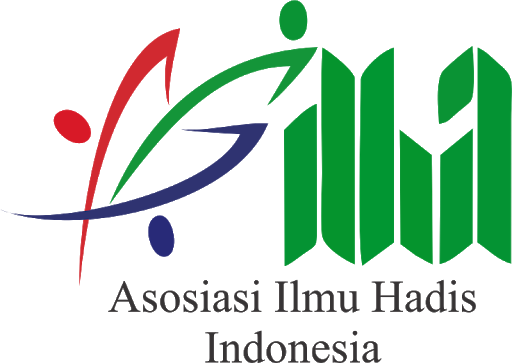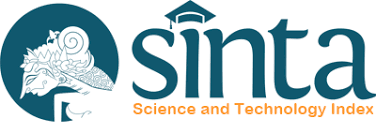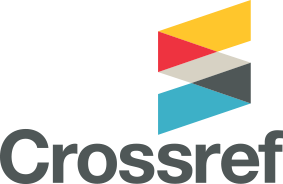Antioxidants in the Diet of Madinan Society in 622-632 A.D.
DOI:
https://doi.org/10.14421/livinghadis.2021.2783Keywords:
Antioxidant, Madinah, Dietary Pattern, Healthy Lifestyle, Disease PreventionAbstract
The purpose of this paper is to analyze antioxidant foods in the diet of Madinan society in 622-632 A.D. which is believed to be the time when the Prophet Muhammad dwelled in Madinah. Recently, Madinan society and other societies of the world were reported to have a depraved and unhealthy diet. This paper focuses on the Madinan diet to obtain a deeper understanding of a well-balanced diet as an exemplary dietary model for societies worldwide. This study is a qualitative study and the approach is content analysis. Data collected through the methods of content and document analysis are thematically analyzed using descriptive and analytical methods. Findings demonstrate that the variety of foods in the Madinan diet represents a complete and well-balanced diet. The implication of this study establishes that the foods in their diet contain beneficial antioxidant compounds. Thus, the dietary model of Madinan society can be recommended and served as one of the dietary models owing to its health benefits and its palatability. Abstract viewed: 647 times
|
Abstract viewed: 647 times
|
 PDF downloaded = 460 times
PDF downloaded = 460 times
References
Abu Daud. (n.d.). Sunan Abī Dāud. Beirut: Al-Maktabah Al-Asriah.
Abu Mansur Al-Thaalabi, A. M. (2002). Fiqh Al-Lughah wa Sirru Al-’Arabiah. N.P: Ihya’ Al-Turath Al-Arabi.
Ahmad. (1995). Musnad Aḥmad. (A. Muhamad Syakir, Ed.). Al-Qahirah: Dar Al-Hadith.
Al-Bukhari, M. (2001). Ṣaḥīḥ Al-Bukhārī. (M. Z. Nasir Al-Nasir, Ed.). N.P: Dar Tauq Al-Najah.
Al-Hamwi, S. (1995). Mu’jam Al-Buldān. Beirut: Dar Sadir.
Al-Mamary, M.et al. (2002). Antioxidant Activities and Total Phenolic of Different Types of Honey. Nutrition Research, 22(9), 1041–1047.
Al-Mubarakfuri, S. A.-R. (1996). Al-Raḥīq Al-Makhtūm (The Sealed Nectar). Riyadh: Dar Al-Salam Publication.
Al-Mustafa, A. & Al-Thunibat, O. (2008). Antioxidant Activity of Some Jordanian Medicinal Plants Used Traditionally for Treatment of Diabetes. Pakistan Journal of Biological Sciences, 11(3), 351–358.
Al-Nasaie, A. (1986). Sunan Al-Nasāie. (A. F. A. Ghudah, Ed.). Halb: Maktab Al-Matbuat Al-Islamiah.
Al-Tirmizi, M. (1975). Sunan Al-Tirmizī. Misr: Mustafa Al-Bab Al-Halabi.
Al-Waqidi, M. (1989). Al-Maghāzī. Beirut: Dar Al-A’lami.
Ali, J. (2001). Al-Mufaṣṣal fī Tārīkh Al-‘Arab qabl Al-Islām. N.P: Dar Al-Saqi.
Amjadi, O. et al. (2014). Remedial Astonishments of Fig in the Holy Quran and Medicine. Journal of Religion and Health 2(1): 78–91.
Arihara, K. (2006). Strategies for Designing Novel Functional Meat Products. Meat Sci, 74, 219–229.
Atli, A. (2019). Milk 101: Nutrition Facts and Health Effects. Available from: https://www.healthline.com/nutrition/foods/beef.
Azain, M. (2003). Conjugated Linoleic Acid and Its Effects on Animal Products and Health in Single-Stomached Animals. Proc Nutr Soc 2003; 62, 319–328.
Bachir Bey, M. et al. (2014). Deployment of Response Surface Methodology to Optimize Recovery of Dark Fresh Fig (Ficus carica L., var. Azenjar) Total Phenolic Compounds and Antioxidant Activity. International Food Research Journal, 21(4), 1477–1482.
Badr, A. A.-B. (1993). Al-Tārīkh Al-Syāmil li Al-Madīnah Al-Munawwarah. Madinah Al-Munawwarh: N.P.
Barbaro, B. et al. (2014). Effects of the Olive-Derived Polyphenol Oleuropein on Human Health. International Journal of Molecular Sciences, 15(10), 18508–18524.
Berry, E. M. et al. (2011). The Middle Eastern and biblical origins of the Mediterranean diet. Public health nutrition, 14(12 A), 2288–2295.
Bharti, R. & Ahuja, G. (2012). A Review on Medicinal Plants Having Antioxidant Potential. Journal of Pharmacy Research, 5(8), 4278–4287.
Bogdanov, S. et al. (2008). Honey for Nutrition and Health: A Review. Journal of the American College of Nutrition, 27, 677–689.
Bragadóttir, M. (2001). Endogenous Antioxidants in Fish. University of Iceland.
Brewer, M. S. (2011). Natural Antioxidants: Sources, Compounds, Mechanisms of Action, and Potential Applications. Comprehensive Reviews in Food Science and Food Safety (http://doi.wiley.com/10.1111/j.1541-4337.2011.00156.x)
Centre, M. N. W. and T. (2009). Al-Wajīz fī ‘Ulūm al-Qurān. N.P: Jamiah Al-Maarif Al-Islamiah Al-Thaqafiah.
De Nigris, F. et al. (2007). Effects of Pomegranate Fruit Extract Rich in Punicalagin on Oxidation-Sensitive Genes and eNOS Activity at Site of Perturbed Shear Stress and Athegenesis. Cardiovasc Res, 73(2), 414–423.
Decker, E. et al. (2001). Inhibition of Low Density Lipoprotein Oxidation by Carnosine and Histidine. J Agric Food Chem, 2001(49), 511–516.
Decker, E. et al. (2000). Mechanisms of Endogenous Skeletal Muscle Antioxidants: Chemical and Physical Aspects. In Antioxidants in Muscle Foods. New York: Wiley- Interscience.
Droulez, V. et al. (2006). Nutrient Composition of Australian Red Meat: Fatty Acid Profile. Food Aust, 58, 335–341.
Egal, F. (2016). Dumat Al-Jandal. Available from: http://www.saudiarabiatourismguide.com/dumat-al-jandal/
El-Bakry, A. et al. (2013). Antibacterial and Antioxidant Activities of Seedlings of Rumex Vesicarius L.(Polygonaceae). Jounal of Medicinal Plants Research, 7(24), 1754–1760.
Emiley, D. (n.d.). The Nutrition of Chicken. (https://www.fitday.com/fitness-articles/nutrition/healthy-eating/the-nutrition-of-chicken.html)
Farrell, D. (2008). The Role of Poultry in Human Nutrition. Food And Agriculture Organization of the United Nations, (FAO), 4072.
FHF. (2010). A Sea of Health. Norway: FHF.
Fogarasi, A. L. et al. (2015). A Comparative Assessment of Antioxidant Properties, Total Phenolic Content of Einkorn, Wheat, Barley and Their Malts. Food Chemistry. (https://linkinghub.elsevier.com/retrieve/pii/S0308814614009820)
Goupy, P. et al. (1999). Antioxidant Composition and Activity of Barley (Hordeum vulgare) and Malt Extracts and of Isolated Phenolic Compounds. Journal of the Science of Food and Agriculture. (https://onlinelibrary.wiley.com/doi/10.1002/(SICI)1097-0010(199909)79:12%3C1625::AID-JSFA411%3E3.0.CO;2-8)
Grażyna, C. et al. (2017). Natural Antioxidants in Milk and Dairy Products. International Journal of Dairy Technology, 70(2), 165–178.
Heneman, K. & Zidenberg-Cherr, S. (2008). Some Facts About Phytochemicals. (https://ucanr.edu/sites/Tulare_County/files/32436.pdf)
Ibn Al-Sakit. (1998). Kitāb Al-Alfāz. (F. Qabawah, Ed.). N.P: Maktabah Lubnan Nasyirun.
Ibn Kathir. (1997). Al-Bidāyah wa Al-Nihāyah. (A. R. A.-T. Abdullah, Ed.). N.P: Hajar.
Ibn Majah. (n.d.). Sunan Ibn Mājah. (M. F. Abdul Baqi, Ed.). N.P: Dar Ihya’ Al-Kutub Al-Arabiah.
Ibn Manzur, M. (1993). Lisān Al-‘Arab. Beirut: Dar Sadir.
Ibn Rustah. (n.d.). Al-A’lāq Al-Nafsiah. N.P: Dar Al-Kutub Al-Ilmiah.
Ibn Saad. (1990). Al-Ṭabaqāt Al-Kubra. (Z. M. Mansur, Ed.). Al-Madinah Al-Munawwarah: Maktabah Al-Ulum wa Al-Hukum.
Ibn Syibh, U. (1979). Tārīkh Al-Madīnah. (F. M. Shaltut, Ed.). N.P: No Publisher.
Idehen, E. et al. (2017). Bioactive Phytochemicals in Barley. Journal of Food and Drug Analysis. By (https://linkinghub.elsevier.com/retrieve/pii/S1021949816301223)
Iizumi, T. & Ramankutty, N. (2015). How do weather and climate influence cropping area and intensity? Global Food Security, 4, 46–50.
JAKIM. (2011). Tafsīr Al-Raḥmān: Interpretation of the Meaning of the Quran. Putrajaya: JAKIM.
Jalal Al-Din, M & Jalal Al-Din, A. (2000). Tafsīr al-Jalālain. Al-Qahirah: Dar al-Hadith.
Jones, D. et al. (1992). Glutathione in Foods Listed in the National Cancer Institute’s Health Habits and History Food Frequency Questionnaire. Nutr Cancer, 17, 57–75.
Kahrizi, D. et al. (2012). Medicinal Plants in Holy Quran. American Journal of Scientific Research, (42), 62–71.
Kenjeric, D. et al. (2007). Flavonoid profile of Robinia honeys produced in Croatia. Food Chem, 102, 683–690.
Khafagi, I. et al. (2006). A Voyage in the World of Plants as Mentioned in the Holy Quran. International Journal of Botany, 2(3), 242–251.
Khalil, M. I. et al. (2010). Antioxidant Properties of Honey and Its Role in Preventing Health Disorder. The Open Nutraceuticals Journal, 3(1), 6–16.
Khan Marwa, S. et al. (2009). Fruit Plant Species Mentioned in the Holy Qura’n and Ahadith and Their Ethnomedicinal Importance. American-Eurasian J Agric & Environ Sci, 5(2), 284–295.
Lăcătușu, C. M. et al. (2019). The mediterranean diet: From an environment-driven food culture to an emerging medical prescription. International Journal of Environmental Research and Public Health, 16(6), 942.
Laouini, S. et al. (2012). Phytochemical Analysis, Antioxidant and Antimicrobial Activities of Leaves Extract of Date Palm Grown in Algeria. Journal of Fundamental and Applied Sciences, 4(2), 142–154.
Loren Cordain et.al. (2005). Origins and evolution of the Western diet: Implications of iodine and seafood intakes for the human brain. American Journal of Clinical Nutrition, 81(2), 341–54.
Malik. 1985. Muwaṭṭa’. Lubnan: Dar Ihya’ Al-Turath Al- Arabi.
Maududi. (n.d.). The Meaning of the Qurān (Tafhīm Al-Qurān). Available from: http://www.englishtafsir.com/
Mohamed, M. et al. (2010). Studies on the Antioxidant Properties of Tualang Honey of Malaysia. African Journal of Traditional, Complementary and Alternative Medicines, 7(1), 59–63.
Mousavi, T. et al. (2014). Nutritional Value and Health Benefits of Dates according to Islamic Recourses and Traditional Medicine. Journal of Mazandaran University of Medical Sciences, 24(117), 247–265.
Muhammad Hassan Syurrab, M. (1997). Al-Ma ‘ālim Al-Athīrah fī al-Sunnah wa Al-Sīrah. Damsyiq: Dar Al-Qalam.
Muslim. (n.d.). Ṣaḥīḥ Muslim. (M. F. Abdul Baqi, Ed.). Beirut: Dar Ihya’ Al-Turath Al- Arabi.
Nahak, G. et al. (2014). Antioxidant Potential and Nutritional Values of Vegetables: A Review. Research Journal of Medicinal Plant, 8(2), 50–81.
Nations. (2011). Fish and Human Nutrition. Food and nutrition,12(2), 2.
Nebeling, L. (2002). Phytochemicals the Color of a Healthy Diet. PediatricBasics 98. By (https://www.researchgate.net/publication/286783314_Phytochemicals_the_color_of_a_healthy_diet)
Nestle, M. (1995). Mediterranean Diets: Historical and Research Overview. J Clin Nutr, 61((suppl)), 1313S–20S.
Overvad, K. et al. (1999). Coenzyme Q10 in Health and Disease. Eur J Clin Nutr, 53, 764–770.
Probst, Y. (2009). Nutrient Composition of Chicken Meat. Rural Industries Research and Development Corporation, 8(210), 1–75.
Purchas, R. & Busboom, J. (2005). The Effect of Production System and Age on Levels of Iron, Taurine, Carnosine, Coenzyme Q10, and Creatine in Beef Muscles and Lover. Meat Sci, 50, 589–596.
Purchas, R. et al. (2004). Concentrations in Beef and Lamb of Taurine, Carnosine, Coenzyme Q10, and Creatine. Meat Sci, 66, 629–637.
Ragaee, S. et al. (2006). Antioxidant Activity and Nutrient Composition of Selected Cereals for Food Use. Food Chemistry. By (https://linkinghub.elsevier.com/retrieve/pii/S0308814605004632)
Rahmani, A. H., Albutti, A. S. et al. (2014). Therapeutics Role of Olive Fruits/Oil in the Prevention of Diseases via Modulation of Anti-oxidant, Anti-tumour and Genetic Activity. International Journal of Clinical and Experimental Medicine, 7(4), 799-808.
Rahmani, A. H., Aly, S. M. et al. (2014). Therapeutic Effects of Date Fruits (Phoenix Dactylifera) in the Prevention of Diseases via Modulation of Anti-Inflammatory, Anti-Oxidant and Anti-Tumour Activity. International Journal of Clinical and Experimental Medicine, 7(3), 483–491.
Rameshrad, M. et al. (2015). Pharmacological and Medicinal Aspects of the Verses Containing Fig (At-tin) in Holy Quran. Health, Spirituality and Medical Ethics, 2(3), 30–36.
Ranjbar, A. et al. (2013). Quran and Pharmaceutical Plants: Antioxidants. Quran and Medicine, 2(1): 5–9.
Saki, K. et al. (2014). Quran Medicine: Studying from Modern Science Perspective. J Nov Appl Sci, 3(1), 53–57.
Sheikh, B. Y. (2016). The role of prophetic medicine in the management of diabetes mellitus: A review of literature. Journal of Taibah University Medical Sciences, 11(4), 339–352.
Shondelmyer, K. et al. (2018). Focus: Nutrition and Food Science: Ancient Thali Diet: Gut Microbiota, Immunity, and Health. The Yale Journal of Biology and Medicine, 91(2), 177.
Thondre, P. S. et al. (2011). Barley β-glucan Extracts as Rich Sources of Polyphenols and Antioxidants. Food Chemistry. By (https://linkinghub.elsevier.com/retrieve/pii/S0308814610013312)
Tomas Barberan, F. et al. (2001). HPLC Flavonoid Profiles as Markers for the Botanical Origin of European Unifloral Honeys. J Sci Food Agric, 81, 485–496.
Washi, S. A. & Ageib, M. B. (2010). Poor diet quality and food habits are related to impaired nutritional status in 13- to 18-year-old adolescents in Jeddah. Nutrition Research, 30(8), 527–534.
Williams, P. (2007). Nutritional Composition of Red Meat. Nutrition & Dietetics, 64(Suppl 4), S113–S119.
Wilson, E. A. & Demmig Adams, B. (2007). Antioxidant, Anti-Inflammatory, and Antimicrobial Properties of Garlic and Onions. Nutrition & Food Science, 37(3), 178–183.
Yu, D. J. et al. (2008). Effects of Dietary Selenium Sources on the Growth Performance and Selenium Retention of Meat in Broiler Chickens. Paper presented at XXIII World’s Poultry Congress, Brisbane, Queensland, Australia.
Yu, J.-H. & Keller, N. (2005). Regulation of Secondary Metabolism in Filamentous Fungi. Annual Review of Phytopathology. By (http://www.annualreviews.org/doi/10.1146/annurev.phyto.43.040204.140214)
Downloads
Published
Issue
Section
License
- Authors who publish with this journal agree to the following terms:
- Authors retain copyright and grant the journal right of first publication with the work simultaneously licensed under a Creative Commons Attribution License that allows others to share the work with an acknowledgement of the work's authorship and initial publication in this journal.
- Authors are able to enter into separate, additional contractual arrangements for the non-exclusive distribution of the journal's published version of the work (e.g., post it to an institutional repository or publish it in a book), with an acknowledgement of its initial publication in this journal.
- Authors are permitted and encouraged to post their work online (e.g., in institutional repositories or on their website) prior to and during the submission process, as it can lead to productive exchanges, as well as earlier and greater citation of published work.
















